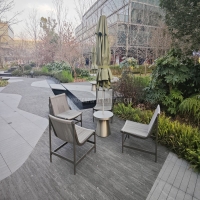Welcome to the website for landscape facilities products and knowledge.
What are the advantages and disadvantages of using synthetic wicker versus natural wicker in landscape chairs?
When choosing landscape chairs, the debate between synthetic wicker and natural wicker often arises. Both materials offer unique benefits and drawbacks, making the decision dependent on individual needs and preferences.
Advantages of Synthetic Wicker:
1. Durability: Synthetic wicker is highly resistant to weather conditions, including UV rays, rain, and humidity, making it ideal for outdoor use.
2. Low Maintenance: Unlike natural wicker, synthetic versions don’t require regular sealing or staining and are easy to clean with just soap and water.
3. Consistency: Synthetic wicker offers uniform color and texture, ensuring a polished look over time.
Disadvantages of Synthetic Wicker:
1. Aesthetics: Some may find synthetic wicker less authentic or visually appealing compared to the organic charm of natural wicker.
2. Environmental Impact: Most synthetic wicker is made from plastic, which isn’t biodegradable and may raise sustainability concerns.
Advantages of Natural Wicker:
1. Eco-Friendly: Natural wicker, typically made from rattan or bamboo, is biodegradable and renewable.
2. Classic Appeal: It exudes a timeless, rustic elegance that synthetic alternatives often struggle to replicate.
Disadvantages of Natural Wicker:
1. Maintenance: Natural wicker requires regular upkeep, such as sealing, to prevent moisture damage and fading.
2. Durability Issues: It’s more prone to cracking and warping when exposed to harsh weather conditions.
Ultimately, the choice between synthetic and natural wicker depends on your priorities—whether it’s durability and ease of care or environmental sustainability and traditional aesthetics.
Related search:

Recommendation
Metal structure rattan chair without armrests for single person, with woven seat and backrest.